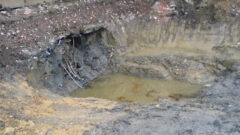
R&D Expenditure Credit Explained
The R&D expenditure credit (RDEC) scheme enables large companies to claim tax relief on expenditure related to research and development projects. Primarily used by companies which have over 500 employees and an annual turnover of €100 million, it offers a 12% tax credit for both profit and loss-making businesses. Here, we explain the current RDEC rate and the specifics of making a claim under the scheme.
How much can you claim under the RDEC scheme?
On January 1, 2018, the RDEC rate increased from 11% to 12%, meaning that for every £1 spent on qualifying costs, up to 10p (after Corporation Tax deduction) can be claimed back. The cash benefit after tax is therefore 10%, which is calculated as a deduction from the tax bill for profitable companies, while loss-making businesses with no tax payable can claim the benefit as cash.
Let’s look at an example of a large company that has spent £250,000 on R&D:
£250,000 spend x 12% enhancement rate = £30,000 above the line credit
£30,000 – 19% CT rate (in this case £5,700) = £24,300
The after-tax benefit in this example is £24,300.
What period can be claimed for?
Your RDEC tax credit claim is calculated from when work on resolving the scientific or technological uncertainty begins. At this point, you will have identified the issues that need resolving and determined that there is no existing solution or professional in the field who can easily find one.
You can claim R&D relief from this point until a working prototype that solves the problem has been developed or until you stop working on the project.
What costs qualify?
Qualifying expenditure must be directly associated with the R&D activity, and certain categories can be included when calculating your claim. These include:
- Staff costs such as salaries, NIC contributions and pension payments
- Some sub-contractor costs and money spent on Externally Provided Workers (EPWs)
- Consumables and utilities such as electricity, water and heat
- Costs for certain types of software
- Contributions to independent research
- Payment of clinical trial volunteers
How RDEC credit is received
How a business receives its credit is determined by a seven-step process, which identifies whether there is any outstanding tax owed to HMRC or whether credit needs to be carried forward to a subsequent accounting period.
This process ensures claims are calculated accurately and that both profit and loss-making businesses are treated fairly and equally by the scheme.
Advice on RDEC rates and claims
Calculating the R&D tax credits owed to you under the RDEC scheme is notoriously complex. Businesses making their first R&D claim under the scheme, or who need help with calculating their claim, should therefore seek help from a professional tax specialist. At R&D Tax Solutions, we have extensive experience with helping companies in a range of industry sectors make successful claims. Contact us today on 0161 298 1010 for assistance.





